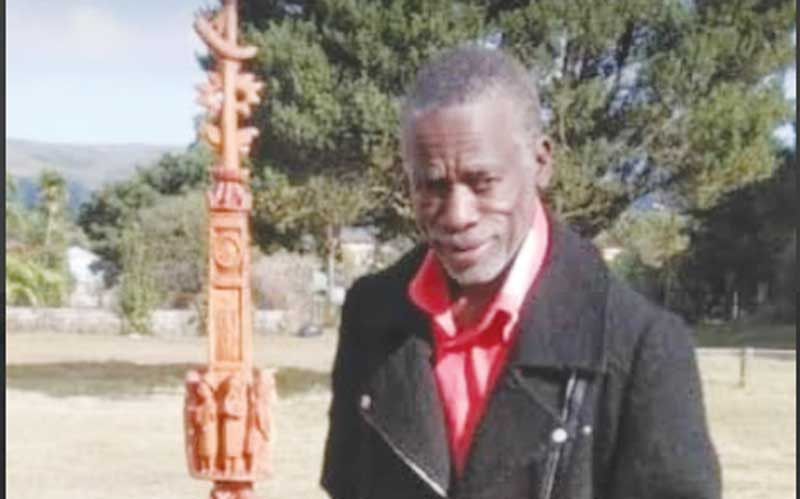
NARRATING his journey as a sculptor, one would not think that one day he would become one of the best indigenous producers of the tilapia fish in rural Nyamakate areas of Kariba.
This is the story of Rainos Tawonameso (67) the man who is behind the famous Kariba’s Nyaminyami sculpture who has traded his chisels for a fish farming business.
A visit to his homestead by the NewsDay Weekender reflects a man with determination, passion, and zeal to excel.
His innovation and thinking are above measure.
After spending a decade in neighbouring South Africa working as a narrative sculpture designer, the Bikita-born sculptor decided to venture into aquaculture upon returning home.

“Firstly, village tours played a significant role in igniting my interest in aquaculture. As I visited different villages and communities, I noticed how their livelihoods and food security revolved around fishing and aquaculture practices,” recalled Tawonameso.
“Witnessing the success stories of other young fish farmers where aquaculture provided not only a sustainable source of income but also improved nutrition, inspired me to delve deeper into this field to alleviate poverty, create employment opportunities and ensure food self-sufficiency.
- UAE’s Masdar forms joint venture for Renewable Deployment in Africa
- Ex-dissident pens Gukurahundi book
- UAE’s Masdar forms joint venture for Renewable Deployment in Africa
- Steward Bank posts big jump in profits
Keep Reading
“In addition to addressing food security, the aquaculture industry in Zimbabwe contributes to the national economy by creating employment opportunities, particularly in rural areas. It has the potential to alleviate poverty, empower local communities and stimulate economic growth through value addition and processing activities associated with aquaculture products,” he added.
Tawonameso designed a wooden typewriter while at Chibuku Primary School in 1971 before carving the famous Nyaminyami walking stick in 1986 that shaped the arts industry in Zimbabwe.
The Nyaminyami sculpture has become a symbol and major attraction to domestic and foreign tourists in the resort town of Kariba.
“After the mighty Nyaminyami carving, during my 10-year stay in South Africa, I designed different types of artefacts like the one I designed back home [the Nyaminyami walking stick]. Each has its own story in the form of totem poles,” he said.
In 1992, Tawonameso presented the walking stick to the late British Queen Elizabeth.
In 1997, he was commissioned to design South African history carvings for display at Roben Island Museum.
As if that was not enough, in 2002, he was commissioned to design and carve Zaoga history which was presented at the International Deeper Life Conference in Harare before being commissioned by Kariba Municipality to design a welcome sign “Zimbabwe is Best”.
In 2004, he was contracted to design and carve a Tonga chair presented to the late former President Robert Mugabe.
Asked whether his move into fish farming was a sign that he didn’t earn much from sculpting, Tawonameso said: ““My rich history as a sculptor explains my achievements in the years I have been in the industry.”
The famous Nyaminyami has the face of a fish and the torso of a snake.
The Tonga people inhabited both banks of the Zambezi River in Zimbabwe and Zambia but in the 1950s before life changed for them after the construction of the Kariba Dam at a gorge where Nyaminyami, a river god and his wife Kitapo reportedly lived.

But the Tonga and the Lozi people have continued to exercise their cultural rituals in the Zambezi River and one of these rituals is the Kuomboka spectacle, held to commemorate the movement to higher grounds from the flooding in the lower Zambezi plains.
Kuomboka means coming out of the water.
Instead of calling it a disaster, they have made a ceremony out of it.
As the water is flooding, people start moving to the highlands.
The swelling and spiralling of the waters is believed by some to be caused by Nyaminyami.
“I want to believe that maybe Nyaminyami was annoyed in a way, hence making those floods so that people could perish because they don’t believe in him now,” said Chief Simamba.
The Tonga people believe the building of the Kariba Dam deeply offended the Nyaminyami, leading to him separating with his wife. The regular flooding and many deaths during the dam’s construction were attributed to his wrath.
After the dam was completed, the Tonga believed Nyaminyami withdrew from the world of men.
Even though some have shunned the existence of Nyaminyami, a few are still holding onto his mysterious heritage that once watched over the region. Whether or not Nyaminyami comes back to claim his ultimate status as the god of the Zambezi River, it is only up to the future to tell.
But for a man who is part of the Kariba history through the famous Nyaminyami stuff, it is time to divert attention to other money-making ventures.
Today, he is one of the consistent suppliers of the tilapia fish in and around Kariba.
“Fish farming is my new hobby, I still want to grow it beyond this,” Tawonameso says.







